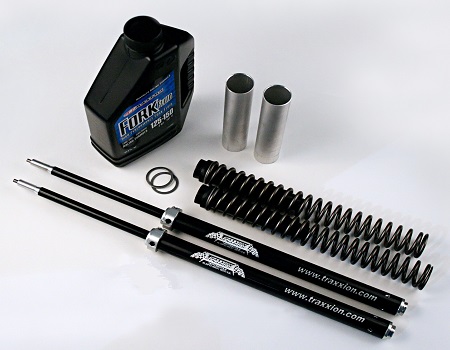The fact that there's more spring displacement in one case forces the air to occupy a longer distance inside the fork, which would be the same effect as if we reduced the diameter of the tube. This seems to be the part that you disagree with.
Difficult to disagree when I am not sure of the point you are trying to make?
Are you saying the physics is wrong and the fork will not stroke exactly the same distance regardless of spring orientation?
I think the spring can be ignored because its volume doesn't compress,
You can't ignore the spring, it takes away a constant volume in the shrinking air chamber as you compress the fork
It is the reason why if you have a 200 mm column of air above the oil, it will take less than 100 mm of stroke to reduce the volume of air in half.
If you want visualization, cut off this upper part of the spring and pour an equivalent volume of oil in the tube, this is exactly the same situation. But now you can visualize the shorter column of air and understand why it will take less than 100 mm to halve the volume of air.
Last edited:










